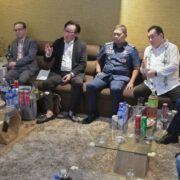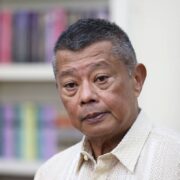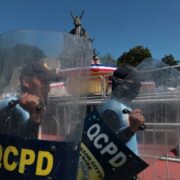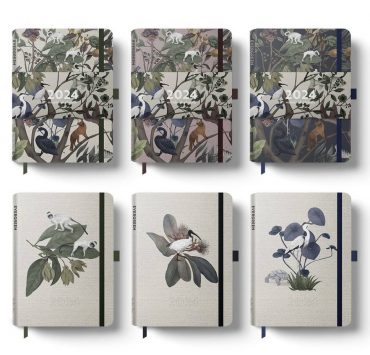Rakugo in English: Japanese storytelling art introduced to PH
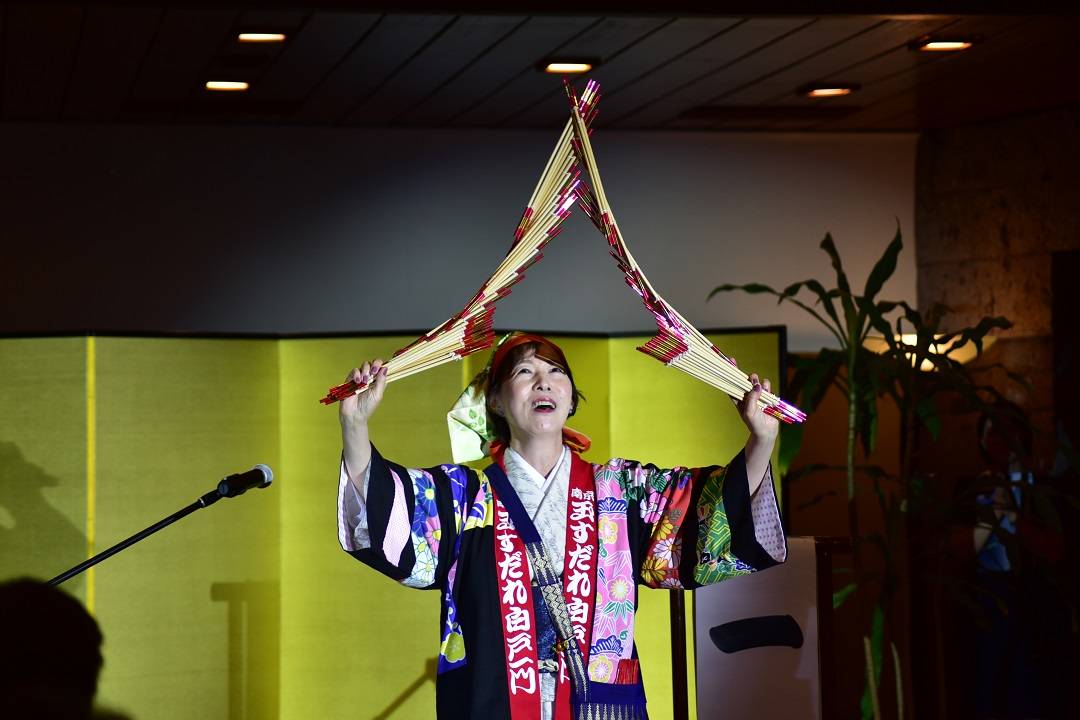
When you talk about traditional Japanese storytelling arts, many would be familiar with Kabuki theater—with elaborate makeup, flashy costumes, singing and dancing—and Noh theater, which is known for its slow, deliberate movements and, most of all, its distinctive masks.
But there is one other far less-known, yet equally revered form of Japanese storytelling: the 400-year-old Rakugo.
Rakugo, unlike Kabuki and Noh, is a far more minimalist, almost casual art of storytelling—with almost no movement involved. It involves just one performer, called a rakugoka, dressed in a kimono, who sits throughout the performance on a cushion called a seiza, which in turn is on a raised platform called a kōza.
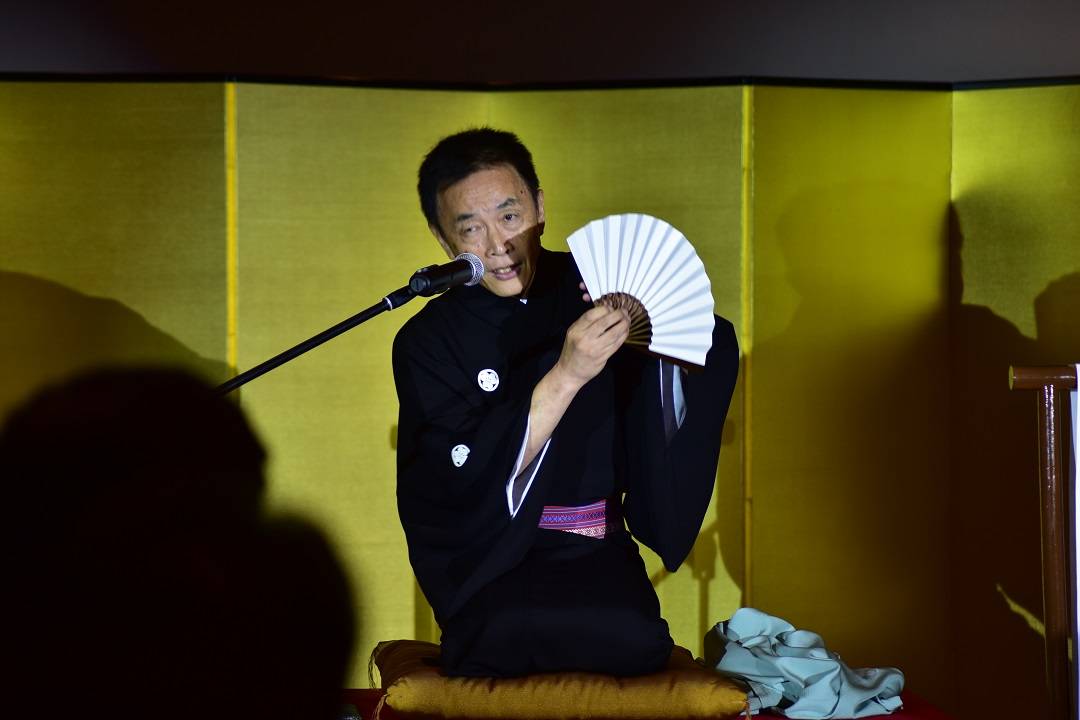
The rakugoka enters the theater, sits on the seiza and tells the story with a paper fan and a small hand towel. It is a very still art, as the entire audience is focused only on the rakugoka. The story is told through the movements of their bodies and, most of all, their voices, through which a rakugoka can portray multiple characters in one story.
Unique art
Unlike Kabuki and Noh, most Rakugo stories are short, almost like anecdotes, and are humorous, but they can be emotional, dramatic or even scary. One thing they do have in common is that the Rakugo stories always build up to a punchline that puts the entire story in perspective or gives the audience a laugh, a start or a warm feeling.
Though it is a traditional form, it has not become ubiquitous or synonymous with Japanese culture, probably because it was, for a very long time, told exclusively in Japanese. But that started to change in the last decades, and Rakugo in English has begun to introduce this unique art to the world.

That is exactly what happened when the Embassy of Japan, together with JTI Philippines and the English Rakugo Association, took Rakugos on a tour in the Philippines, visiting the University of the Philippines Asian Center, Acacia Hotel in Davao and De La Salle University.
On the occasion of the 50th anniversary of Japan-Asean ties, a special Japan cultural night featuring Rakugo was held at the Japanese ambassador’s residence in Makati City last week. This evening was an intimate performance where the guests could get up close and really witness the rakugokas in action.
In his welcome remarks, Japan Ambassador Kazuhiko Koshikawa noted that “while Noh, Kabuki, Kyogen, Nihon Buyo or Japanese dance and Bunraku have gained international recognition among Japanese traditional performing arts, Rakugo has not been well known abroad, partly because it is a form of verbal art, entertainment and a form of storytelling that has the Japanese language as its essence.”
Two ‘rakugokas’
Both rakugokas put the audience at ease with some preperformance banter that even included some local references.
The first rakugoka was Kappa Kanariya, who performs over 60 Rakugo stories a year. Prior to his performance, he took the time to explain some of the basics of the art (sitting perfectly on his seiza, of course). He performed a comedic piece called “Long Tempered Vs. Short Tempered,” where two childhood friends with opposing personalities try to have a conversation—badly. Tanshichi, you see, is extremely impatient and speaks very quickly, while the visiting Chou speaks very slowly. It was amazing to see Kappa perform as two totally distinctive characters—you can really tell them apart—and as the story neared its climax, it got funnier and funnier.
The second performer, Ichirin Kanariya, is an English language instructor, but grew to love performing Rakugo in English since discovering it in 2013. She now performs Rakugo in both Japanese and English. Prior to her story, Ichirin got the audience engaged by making them clap along to a chant she made up while she was performing with a set of bamboo sticks that she manipulated into an amazing array of shapes.
If Kappa’s story had two characters, Ichirin’s had three. In “Ramen Stand,” a childless elderly couple is discussing whether to close their ramen stand for the evening when a young man runs up and winds up eating four bowls of ramen. But then he reveals he has no money to pay them and insists to be turned over to the police so he would have somewhere to stay for the night and breakfast in the morning at the jail.
Instead, the couple ask him to just help them push the cart, then ask him to stay with them and, let’s just say the night turns out very differently than the penniless young man expected. Ichirin’s ability to channel all three characters and mimic the movements of pushing a cart or eating a bowl of ramen, all while sitting still, was impressive.
Both rakugokas received loud applause and at the end. Kappa and Ichirin were flooded with requests for selfies and photos with an audience that included Senate President Juan Miguel Zubiri, Sen. Cynthia Villar, Executive Secretary Lucas Bersamin and Finance Secretary Benjamin Diokno.
Hopefully, this evening and the tour would have whetted Filipinos’ appetite for Rakugo, and that we will see more Rakugo in English performances in the future. After all, Rakugo has always been considered the storytelling art for the common people.
Koshikawa emphasized this when he said, “Even today, it is enjoyed by many Japanese, young and old, men and women alike, on television and at Yose or special halls for Rakugo performance.” INQ



